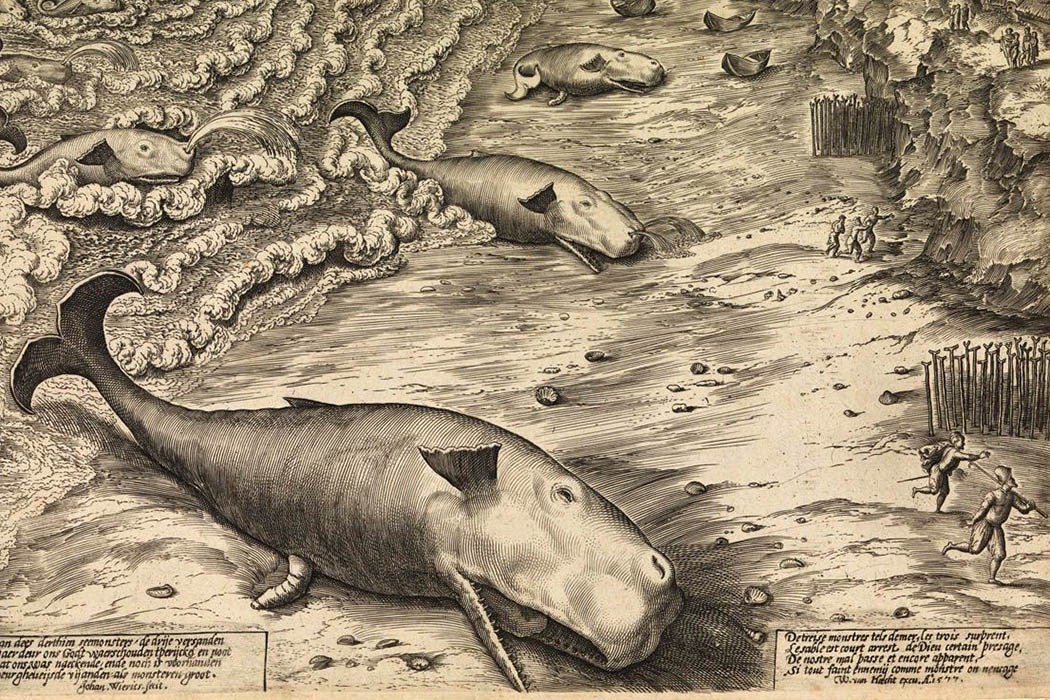When more than 600 pilot whales stranded recently in New Zealand, there was a tremendous outpouring of sorrow and outrage. The community rallied to comfort the doomed whales and rescue the survivors. The incident renewed attention to the issue of whale strandings. In huge pods, small groups, or as individuals, whales routinely find themselves aground or stuck in shallow water. The experience is often fatal and authorities are left with a daunting waste-disposal challenge. But why do strandings happen?
There are many possibilities, but few answers. Strandings have been associated with magnetic field shifts, disease and parasites, undersea noise, military sonar, weather, unusual weather events, pollution, fishing, and/or pollution. Evidence is often vague, however, and no one explanation stands out. No two strandings are alike. A large pod of dolphins may strand for completely different reasons than a large, solo-living whale does. Particular species may be susceptible to different causes.
Paradoxically, some researchers think that whales’ very charisma may undermine stranding research. People love whales, and emotional responses to their deaths can skew objectivism. For example, military sonar is frequently assailed as an existential threat to whales. There is evidence that some species, particularly beaked whales, are especially susceptible to military sonar, but banning it is not guaranteed to dramatically reduce whale strandings. For example, some of the areas that have the most strandings have the fewest military exercises. It doesn’t mean that sonar is completely benign. But it’s worth acknowledging that finding bogeymen, while satisfying, might miss overall trends.
A 25-year-long analysis of humpback whales in Australia provides a potential map for a large-scale approach to the problem. The analysis found that most stranded animals were calves or juveniles, and were found in August (the Austral winter). When immediate cause was known, vessel collision and fishing gear entanglement were the most common sources. Most intriguingly, strandings increased when a major current, the East Australian Current, shifted closest to the coastline. Connecting these puzzle pieces, a picture begins to emerge. Migrating juveniles and mothers with calves, tend to rest in shallow water, which might bring them into greater contact with ship traffic and fishing activity. Whales using the current may wind up closer to the shore than usual, increasing the vulnerability to anthropogenic causes. Data like this can be used to help reposition fishing gear and shipping channels during high-risk periods and limit stranding risk.
The humpback whale data won’t translate directly to all species, but long-term, large-scale studies on other species will hopefully help come up with objective solutions to reduce future mortality. Most likely, strandings have multiple causes; e.g. an already stressed animal might be more vulnerable to the effects of sonar.
It’s also useful to put things in perspective: strandings are distressing spectacles but probably overfishing or plastic pollution are, overall, the greater threats.







